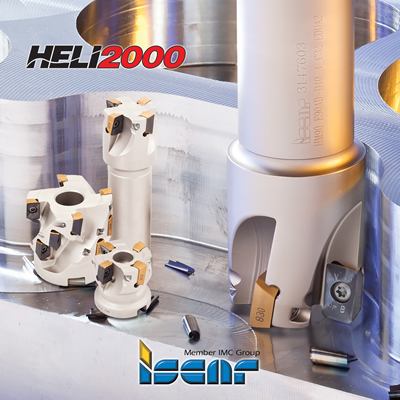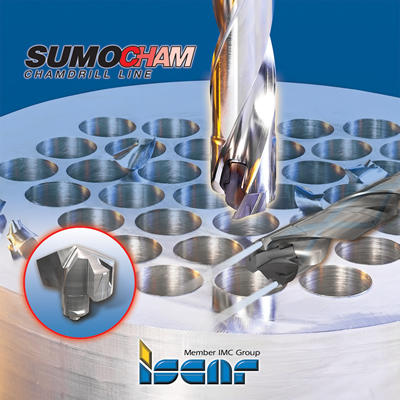Among the various factors in the processing environment, the tool occupies a very important position. Although the tool only accounts for 3% of the total production cost, if the machining efficiency is increased by 20% by proper tool selection, the total cost can be effectively saved by up to 15%.
As with the domino effect, by increasing the processing performance by 15-20%, the productivity can be greatly improved, which in turn directly promotes the increase in profitability and allows the company to become more competitive. However, the above goals can only be achieved through the cooperation of advanced tools, cutting-edge CNC machines and intelligent CAD/CAM software.
Choosing the right metal cutting strategy for high productivity
Proper selection of tools and cutting parameters reduces cycle times and reduces individual workpiece power consumption. The fast metal removal process not only yields high productivity but also saves energy. Overall, the shorter the tool cutting time, the higher the productivity and the less energy is consumed. In the same way, productivity can be further improved by using the advanced CAD/CAM software system to obtain the shortest tool path and optimizing the cutting parameters.
Increase productivity with vibration-damping machining solutions
The chip structure design, high precision, and effective allocation of cutting forces together improve tool performance, combined with vibration reduction design and smooth chip evacuation design to significantly reduce power consumption while achieving high productivity. The two main factors driving low energy consumption and high metal removal rate are spiral cutting edges and unequal pitch structures. Tools with unequal pitch structures eliminate harmonic vibrations, which are the main cause of vibration. During processing, whenever vibration or noise is generated, the operator always rapidly reduces cutting parameters such as cutting speed, feed or depth of cut, which is not conducive to the performance of the tool.
As a leading tool manufacturer, Iskar continues to innovate with the goal of increasing productivity and continuously develop innovative products.
Iskar's CHATTERFREE FINISHRED is a good example. The cutter is specially designed to eliminate vibrations in milling and to perform both rough and finish milling. The unequal pitch spiral edge arrangement of the milling cutter eliminates the main cause of vibration - harmonic vibration, thus harvesting fast metal cutting and achieving higher machining in the case of roughing cutting parameters. Surface Quality.

Figure 1: Anti-vibration noise reduction end mill (CHATTERFREE FINISHRED)
CHATTERFREE FINISHRED has two types of solid carbide end mills and transformers end mills (see Figure 1), especially for low-power machines with ISO40 and BT40 holders. Solid carbide end mills enable full-slot milling with a maximum depth of 2x. Solid carbide end mill with integrated roughing and finishing cutters, with 4 unequal pitches, 38° helix angle, medium length, greatly shortens the machining cycle; effective in high load applications Vibration reduction, high surface quality obtained under roughing parameters.

Figure 2: HELI2000 anti-vibration noise reduction milling cutter
The CHATTERFREE design concept has also been used for indexable inserts for vibration damping in large overhang milling applications (see Figure 2). The new milling inserts are designed with a unique damping geometry for clamping on HM90 E90AD end mills, HM90 F90A face milling cutters, HELIMILL sleeve milling cutters or corn milling cutters. The milling insert features two asymmetrically designed cutting edges that reduce vibration and extend tool life. Grinded cutting edges and special edge treatments make milling vertical with higher accuracy; machine power is 10% lower than conventional inserts. The unique design of the cutting edge of the milling insert helps the chip removal. This tool has proven to be more efficient than conventional milling cutters with even effective teeth. The wide wiper edge yields high surface quality, while the SUMO TEC alloy grades, IC380 and IC830 meet the challenges of interrupted machining, heavy machining and harsh cutting conditions.
Excitation hole processing productivity

Figure 3: Beam Magic Chameleon (SUMOCHAM)
The innovation also comes from the chameleon waterjet (CHAMFRILLJET) developed by Iskar 10 years ago and the latest version of the SUMOCHAM (see Figure 3), which has changed the concept of hole machining and greatly improved the factory. Productivity has contributed. The new design realizes the quick change cutter head, and the drill rod is clamped on the main shaft to complete the operation; thus there is no downtime, and the repeating positioning accuracy of the cutter head and the drill rod center line is within ±0.001 mm. The drill bit is suitable for processing a wide range of materials to be processed, specially designed geometries, and is designed with a focus on the cutting edge for fast chip evacuation. The smoothness of the SUMOCHAM chip evacuation makes the drilling depth unbelievable, speeding up the drilling process and raising productivity levels. Drill diameters range from 6mm to 33mm, and standard drill diameters increase by 0.1mm. Fast drilling is possible with drill pipe diameters ranging from 1.5XD to 12XD. In practical applications, due to the good toughness of the steel drill pipe, it is possible to avoid bending caused by possible positional deviations at the beginning of the drilling phase.
Tool solutions for increasing turning productivity
To achieve high metal removal rates, the more common choice is a tool with a spiral edge design. Thanks to the unique cutting edge and rake face design of the Iska insert, the turning tool can process with very high cutting parameters (especially at high feed rates) while reducing the cutting forces acting on the cutting edge, cutting edges The contact area with the workpiece is smaller, and vibration reduction is achieved. The sharp corner design allows for high surface finish quality even under high feed cutting conditions, eliminating the need for finishing in many applications. The 88° nose angle design makes the tip stronger. By simply replacing the knife pad, the spiral blade can be easily clamped to the existing standard ISO tool holder.
Increase milling productivity through chip thinning
Axial chip thinning is often associated with high speed machining, but standard size end mills with large arc cutting edge milling inserts can also achieve the same results on medium speed machining machines, achieving high metal removal. rate. When the large arc cutting edge milling cutter is used to obtain a small lead angle on the cutter body, the chip is thinned at a small depth of cut, and a larger feed can be achieved. The term "high-speed machining", especially in the application of machined steel, often refers to the machining of small cutting depths with high spindle speeds and large feeds with small diameter tools. Despite the light cutting, machining in such a way can achieve high metal removal rates and complete the machining path at a very fast rate. In view of chip thinning, the chip thickness is less than the tool feed per tooth. This means that the machine table can be fed even more than the machine spindle limit.
The cutting force generated by the contact of the material to be machined with the large arc of the front end of the milling cutter is not only horizontal but directed to the axial direction along the center point of the insert. In this case, only a part of the cutting force is directed to the X-axis and Y-axis directions, and the remaining cutting force is directed to the Z-axis direction, that is, to the direction of the main axis. In the three axial directions, the rigidity of the system in the Z axis is optimal. The reduction in the lateral force acting on the milling cutter corresponds to a lesser likelihood of the milling cutter being deflected, ultimately resulting in a more reliable machining.

Figure 4: Double-sided spiral blade large feed milling cutter (HELIDO UPFEED H600)
Iskar's extensive range of high-feed milling cutters is specifically designed to increase milling productivity while reducing power consumption (see Figure 4). This design provides high stability and can be processed with very large feeds even in large overhang applications. In addition, the blade is clamped to the wedge-shaped positioning groove so that the clamping rigidity is high. Such milling cutters are required to have internal cooling through holes, especially for high feed milling, ramp milling, plunge milling and helical interpolation milling. The axial depth of the milling cutter and the radial feed and the leading angle together determine the chip thickness. The 45° lead angle makes the chips slim and the machining consumes only 70% of the shoulder milling.
Narrow negative chamfering and light passivation are standard treatments for blade edges in harsh milling environments. However, in the case of severe intermittent milling or heavy machining of large workpieces, negative chamfering must be increased. The feed per tooth should be larger than the edge size to ensure that the tool is cutting the workpiece instead of squeezing the workpiece and obtaining a sufficiently thick chip. Understanding optimized chip control and rationalizing thinning of the chips can greatly increase productivity.
to sum up
By implementing more advanced tooling solutions, combined with appropriate machining strategies, and adopting advanced machining elements as described above, you can achieve higher levels of productivity.
In fact, the key to unlocking the high productivity door is in the hands of the customer, the technology adopted, the tooling solution used, and whether or not to use its non-traditional processing strategy, ultimately the user needs to make a choice. In order to remain competitive, we hope that the mechanics will change their minds, jump out of the box and adopt the most advanced tool solutions.
Implementing an efficient machining solution will help reduce cutting forces, distribute cutting forces more effectively, eliminate vibration, and promote smoother chip removal. This will ultimately achieve maximum metal removal per workpiece, plus minimal energy consumption.
kaiping aida sanitary ware technology co.,ltd , https://www.kpaidafaucets-jm.com